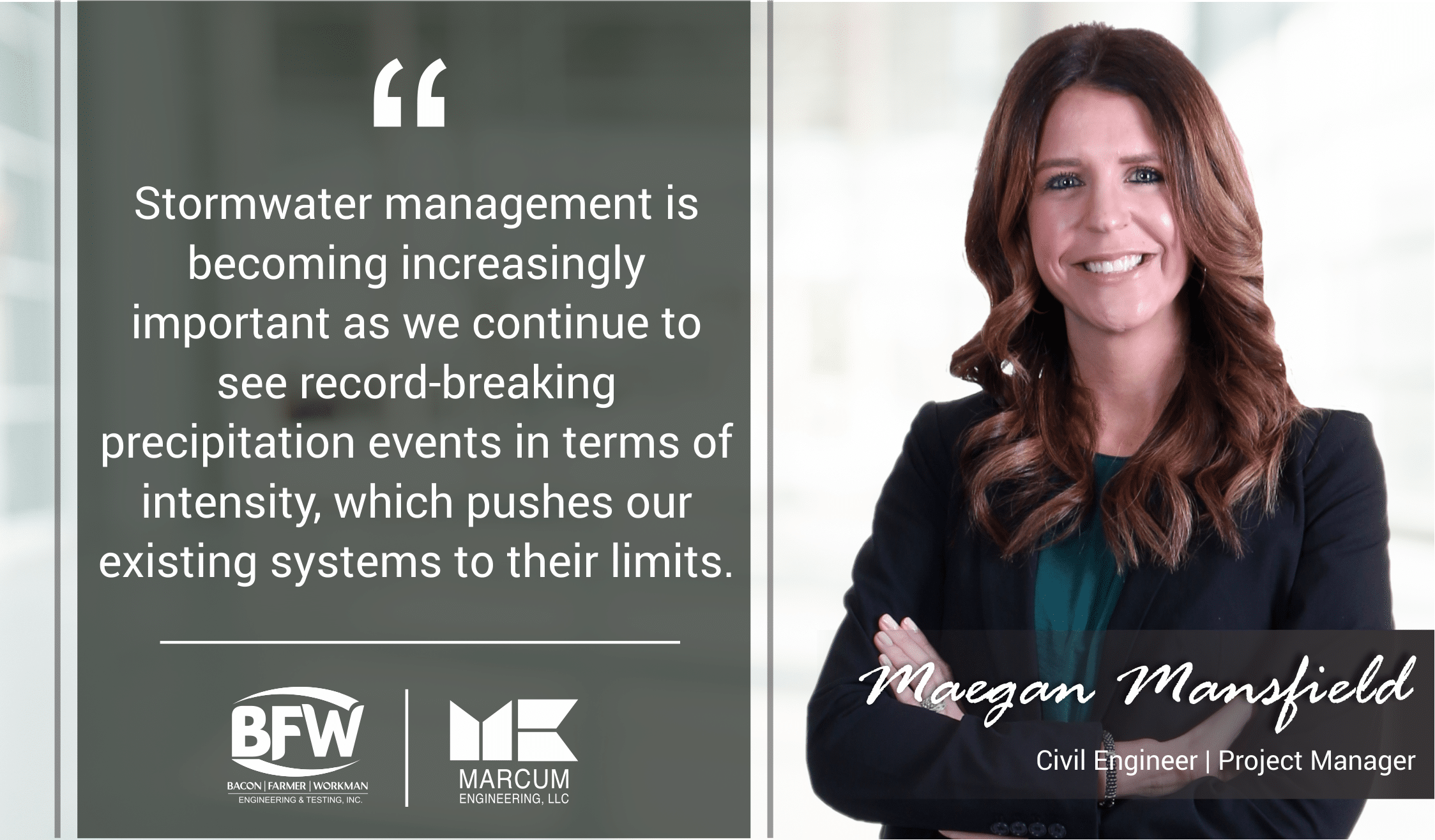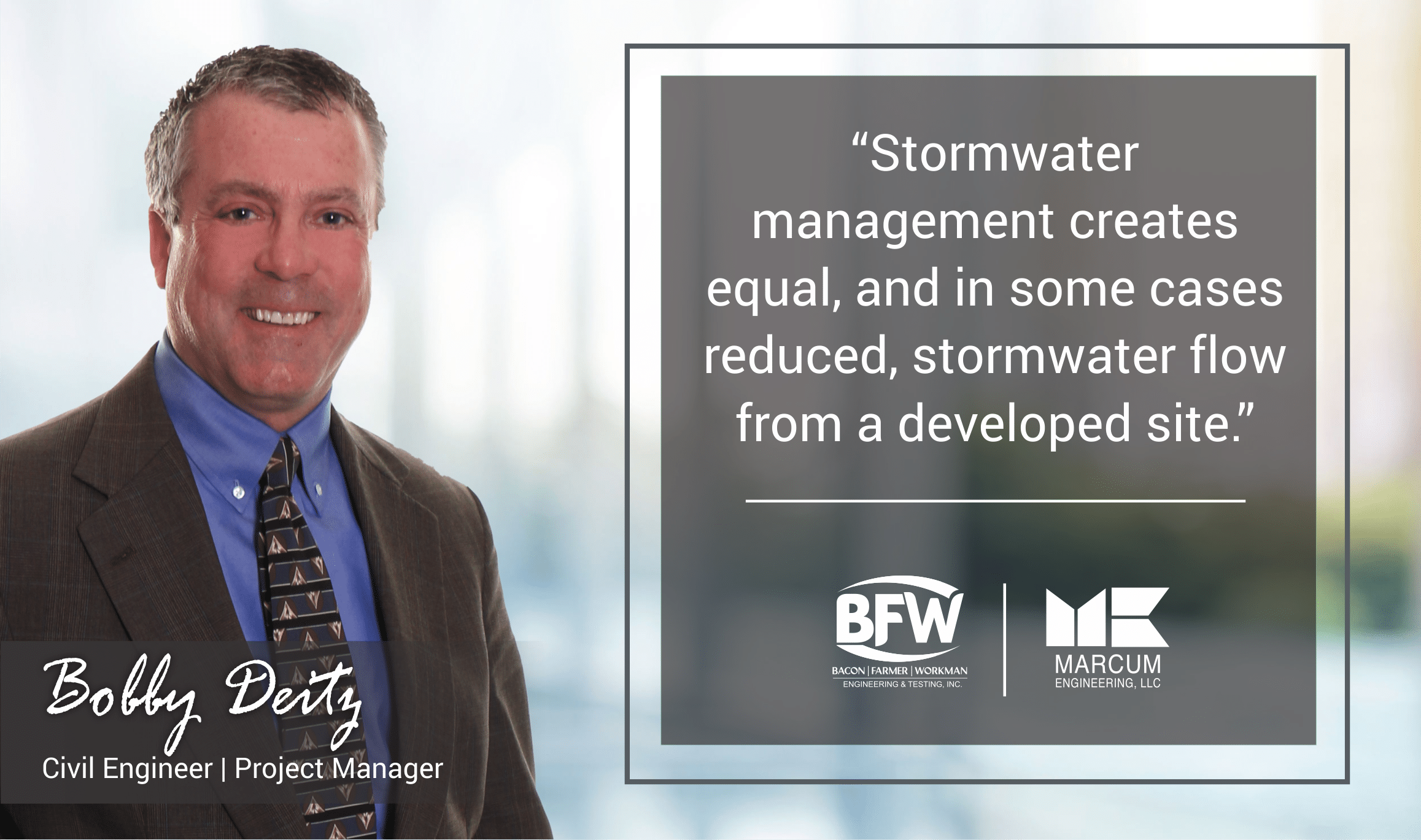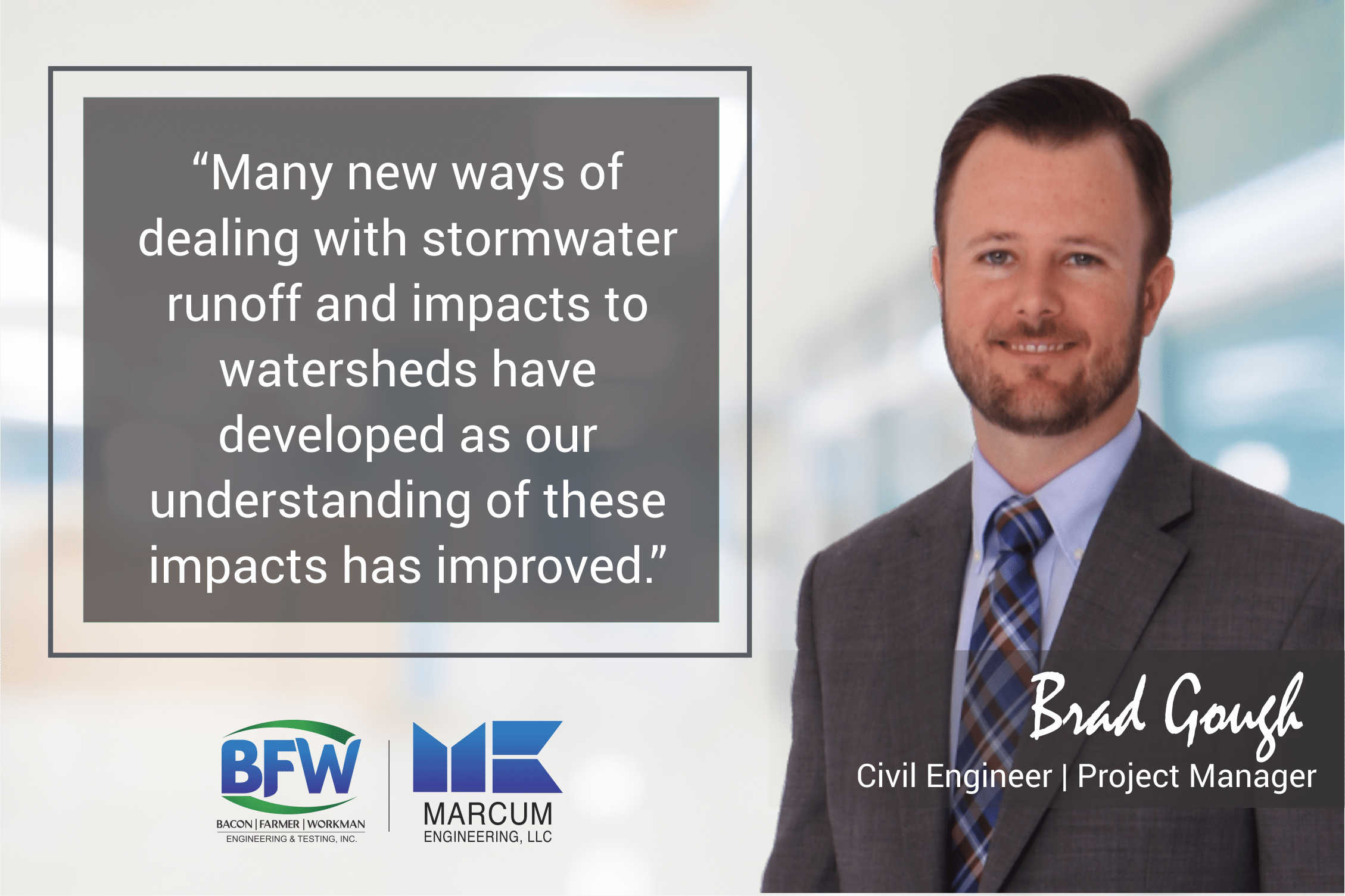Going with the Flow: Storm Water Management in Engineering
Stormwater drainage is another one of those engineering concepts that, when it works well, is almost imperceptible to the layman. However, there are varying degrees of “works well” in our industry. Poor stormwater management can lead to localized flooding or, more indiscernibly, the erosion and pollution of our communal water sources. Stormwater management is a priority in engineering, perhaps more in today’s climate than ever before.
Shedding Light on Our Watersheds
You can’t talk stormwater without hearing the term “watershed”. We thought we’d ask Maegan Mansfield, Civil Engineer/Project Manager, to explain that concept.
“Watershed areas serve an important role in stormwater management as they serve as directional pathways in which precipitation is shed by traveling the land, ultimately reaching our creeks and rivers for discharge into our larger bodies of water.”
So, a watershed is simply the cumulative “path of least resistance” in a wide area. Everything from a passing rain shower to the water from your garden hose will, in enough time, find its way to its designated watershed.
Broken Records, Broken Systems
One of Maegan’s focuses is on stormwater management. In the same breath, she’ll tell you how crazy it’s become lately.

Specifically, in our area, as Kentucky is surrounded by rivers, we see flooding events occur regularly, especially when the river elevation is higher than our land elevations and there is no alleviation point for the water.
Clients must consider the impacts of their developments on the overall stormwater network and be mindful that their projects should be designed with the appropriate stormwater considerations. Since infrastructure, such as asphalt and pavement, creates quicker runoff compared to undeveloped areas, we have design techniques to incorporate on developments that will hold the stormwater or slow it down, to prevent flooding nearby.”
To put it simply, all of that water has to go somewhere. When you build something, you profoundly change the land and you better have an understanding of how that changes where the water flows.
The Path of Least Resistance is Not Always the Path of Least Concern
During her tenure as an engineer, Maegan has cultivated an appreciation for drainage. Notably, just because water wants to go somewhere doesn’t mean it should. Part of her job as an engineer is to look at the full picture.
“Drainage is a top design consideration for every project whether it be a school, restaurant, subdivision, or transportation. Urban areas certainly must consider drainage compared to rural areas, just because of the density of buildings, parking lots, etc. However, it is also an important consideration for rural areas because elevation differentials will be the key factor in determining the impact of drainage characteristics, which isn’t specific to an area classification, but more so the lay of the land.”
Rural, urban; they both need to flow and Brad Gough, Project Manager/Engineer, points out that it’s important to be mindful of how you change the ecosystem and to remember that every small change matters. Brad has designed stormwater systems for many of our projects.
“Every project that involves land disturbance, changes to grades, or the addition of impervious surfaces, such as buildings or pavement, will have an impact on the watershed. It’s important to maintain the environment as close to its natural state as possible to reduce flooding or other adverse effects.
Large projects will have a bigger impact on watersheds over a shorter time. However, over longer periods, many small projects that may not individually warrant mitigation can add up to a significant impact on the watershed.”
Hydrograph Modeling Can Shed Light on Water
Bobby Deitz, Civil Engineer/Project Manager, adds an interesting stat about the importance of retention as a management solution when used with forethought.

Yet, how do you design such a system with the confidence that drainage will behave the way you want it to, and do so for years to come?
“I use a program within AutoCAD Civil 3D called Hydroflow. This software allows me to input watershed information to create hydrographs that I later will route through a designed system to determine peak discharge flow rates from the development.”
Bobby can use this modeling to predict the future. With this insight, they can build retention systems meant to withstand the future requirements of land development.
“In larger developments, our designs typically include a regional detention system we speculate future impervious areas to size the system appropriately.”
The Hidden City Below Our Feet
Believe it or not, even the most unassuming places have an entire hidden infrastructure below them. Engineers have to use this (sometimes ancient) system to move water. Maegan describes this challenge.
“Stormwater design incorporates a lot of components, including underground infrastructure that we don’t see daily. In urban areas, there are storm sewers, and sometimes combined sewer networks, that are primarily responsible for the movement of water into our larger bodies of water. The goal is to optimize the movement of water for precipitation levels that tend to have a recurrent impact on society.
The capacity of our stormwater networks (rather it be water traveling through watersheds, pipes, creeks, etc.) is consistently challenged due to aging infrastructure and storm intensities. We try to direct the water in whichever way we can that will minimize flooding and disruption for our clients and their neighbors.
On a much larger scale, several of our clients are located on rivers that will rise because of repeated storm events, and sometimes those events are far upstream from the local area. We have many clients along the river that manage floodwall systems. BFW/Marcum provides services regarding floodwall management which includes structural design modifications, pump station repairs, and upgrades.”
Sometimes, stormwater management feels like a giant game of whack-a-mole. As soon as you take care of one thing, another thing pops up, and so on. On some projects, it might feel like a losing battle. However, our drainage systems are getting more sophisticated every day.
We’re Finding Better Ways to Build
Brad loves to talk about the new ways we are designing drainage systems.
“Many new ways of dealing with stormwater runoff and impacts to watersheds have developed as our understanding of these impacts has improved. Traditional methods of stormwater management include detaining the water on-site up to a specified rain event such as a 10-year, 25-year, or 100-year storm, depending on the local requirements. However, it’s been discovered that these detention structures are not a perfect solution.

Newer ordinances that are being established in many cities include a water quality component to stormwater that is being detained as well. This can be achieved by utilizing biofiltration swales, water quality units placed on the outlets of detention structures that help clean the water before being discharged, or by holding back the water longer and allowing sediment to settle out.”
We were surprised by Brad’s answer. We thought he’d describe a cutting-edge tool or piece of software that was changing the drainage game. Instead, his answer was more focused on mindfulness. After we thought about it, we realized that what Brad was describing was the modern idea of engineering, one that we ascribe to.
Don’t pass the buck. Do it right the first time. Understand the whole picture and account for the implications. Projects, public or private, serve the entire community. No one should suffer downstream from what is happening upstream. Design today for tomorrow.
These are the tenets of good engineering. It makes perfect sense that we’d approach stormwater management the same way.

Recent Comments